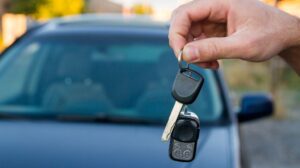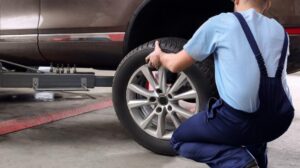Introduction to Squeaky Brakes
Squeaky brakes are a common issue that many car owners encounter at some point. This irritating and sometimes alarming noise can occur for a variety of reasons, and it’s essential to address it promptly to ensure the safety and performance of your vehicle. Ignoring squeaky brakes can lead to more serious problems, such as reduced braking efficiency, increased wear on brake components, and even potential brake failure. By understanding the causes of squeaky brakes, you can take the necessary steps to fix the issue and maintain your car’s braking system in optimal condition.
This blog post will delve into the main causes of squeaky brakes, providing you with valuable insights and practical solutions. You will learn how to identify worn brake pads, understand the implications of glazed rotors, and recognize the importance of proper lubrication on brake pad contact points. By the end of this post, you will have a comprehensive understanding of the common culprits behind squeaky brakes and how to address them effectively.
Diagnose and resolve the squeaky brake issue, ensuring that your vehicle remains safe and reliable. Here are the primary topics we will cover:
- Identifying worn brake pads
- Understanding glazed rotors
- Recognizing the need for proper lubrication on brake pad contact points
By exploring these key areas, you will be better equipped to maintain your car’s braking system and prevent the annoying and potentially dangerous problem of squeaky brakes. Let’s get started on a journey to quieter and safer braking.
Worn Brake Pads
One of the primary causes of squeaky brakes is worn brake pads. Brake pads are integral to the braking system, designed to create friction against the brake rotors to slow down or stop your vehicle. They are typically made from a combination of materials, including metal shavings, rubber, and high-strength resins, which ensure durability and effective performance. Over time, the friction material on the brake pads wears down, leading to decreased efficiency and the onset of squeaking noises.
A high-pitched squeal when braking is one of the most common symptoms of worn brake pads. This squealing occurs because most brake pads have built-in wear indicators, small metal tabs that become exposed as the friction material thins. When these tabs come into contact with the brake rotor, they produce the characteristic squeaking sound, signaling that it is time to replace the brake pads.
Regular maintenance and timely replacement of brake pads are essential in preventing this issue. By addressing worn brake pads promptly, you can ensure optimal braking performance and avoid potential damage to other components of the braking system, such as the rotors. For those seeking replacement brake pads, [Auto Query](https://autoadvisor.online/auto-query/) offers a variety of options to suit different vehicle types and budgets.
In addition to avoiding the annoying squeak, maintaining your brake pads can improve overall vehicle safety. Consistent inspections and timely replacements are key practices in prolonging the lifespan of your braking system. This proactive approach not only enhances your driving experience but also ensures that your vehicle remains in safe operating condition.
Glazed Rotors
Glazed rotors are a common issue that can lead to brake noise and reduced performance. This condition occurs when the brake pads become excessively heated during braking, causing the surface of the rotors to become smooth and shiny. As a result, the friction between the brake pads and the rotors is significantly reduced, leading to an increase in noise and a decrease in braking efficiency.
The process of rotor glazing typically begins with excessive or prolonged braking, which generates high temperatures. This heat causes the brake pad material to transfer onto the rotor surface unevenly, creating a glossy finish. The smooth surface reduces the grip between the brake pads and the rotors, resulting in a squeaking or squealing noise when the brakes are applied.
Identifying glazed rotors can be straightforward if you know what to look for. One of the first signs is a noticeable change in braking performance. If your vehicle requires more distance to come to a complete stop or if you feel a vibration in the brake pedal, glazed rotors might be the culprit. Additionally, consistent and high-pitched brake noise, especially during light braking, is a clear indicator of this issue.
To address glazed rotors, it’s essential to inspect the brake system thoroughly. You can visually check the rotors for a shiny, mirror-like surface, which confirms glazing. In some cases, minor glazing can be resolved by performing a few hard stops to generate enough friction to remove the glossy layer. However, if the glazing is severe, resurfacing or replacing the rotors might be necessary.
For those seeking professional-grade brake maintenance tools and further guidance, consider exploring resources like Auto Query Pro. Access to high-quality tools and expert advice can help maintain your brake system’s optimal performance and safety.
Lack of Lubrication on Brake Pad Contact Points
One common cause of brake squeaking is the absence of proper lubrication on brake pad contact points. Lubrication plays a crucial role in the efficient functioning of brakes, reducing friction and ensuring smooth operation. Specifically, areas such as caliper slides and the back of the brake pads are pivotal in this context. When these parts lack adequate lubrication, it leads to metal-on-metal contact, which generates unpleasant squeaking noises.
The caliper slides are designed to allow the brake caliper to move freely as it applies pressure to the brake pads. Without sufficient lubrication, these slides can become sticky or seized, preventing the brake pads from retracting fully after braking. This situation not only results in squeaking but can also cause uneven wear on the brake pads and rotors, ultimately reducing their lifespan and efficiency.
Similarly, the back of the brake pads should be lubricated to prevent noise-producing vibrations. When brakes are applied, the pads press against the rotors, and without lubrication, this contact can create high-frequency vibrations that manifest as squeaking sounds. These vibrations can also contribute to the wear and tear of brake components, compromising overall braking performance.
To mitigate these issues, it is essential to apply the right type of lubricant correctly. High-temperature brake grease is typically recommended for this purpose, as it can withstand the extreme conditions within the braking system. When applying lubricant, ensure that it is evenly distributed on the caliper slides and the back of the brake pads, avoiding any contact with the pad surfaces or rotors. This will help maintain the integrity of the braking system while minimizing noise and wear.
Neglecting lubrication not only results in annoying squeaks but also accelerates the deterioration of brake components, leading to costly repairs. Regular maintenance and proper lubrication can significantly enhance the longevity and performance of your vehicle’s brakes, ensuring a quieter and more reliable driving experience.





